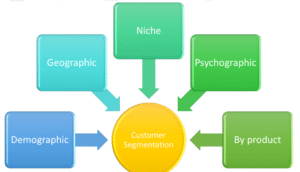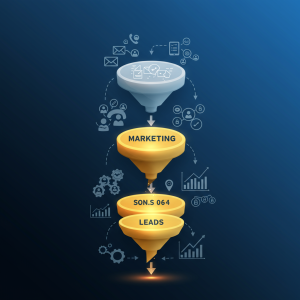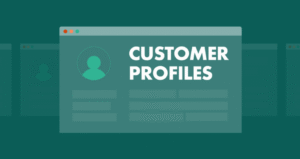The Complete Guide to Outbound Marketing Methods That Work

Outbound marketing proactively reaches potential customers through channels like cold calling, email, direct mail, social ads, and events. Combining traditional and digital methods, measuring performance, and optimizing campaigns enables businesses to generate leads, boost brand awareness, and drive measurable growth efficiently.
Outbound marketing often gets dismissed as outdated, but smart businesses know better. While inbound strategies focus on drawing customers in, outbound marketing actively reaches out to potential buyers where they already are. The key lies in understanding which methods deliver real results and how to execute them effectively.
This comprehensive guide explores proven outbound marketing methods that can accelerate your business growth. You’ll discover traditional approaches that still pack a punch, digital strategies that leverage modern technology, and emerging channels that forward-thinking companies are using to gain competitive advantages.
Whether you’re looking to supplement your existing marketing efforts or build an outbound strategy from scratch, these methods can help you reach new audiences, generate qualified leads, and drive measurable revenue growth.
Traditional Outbound Marketing Methods
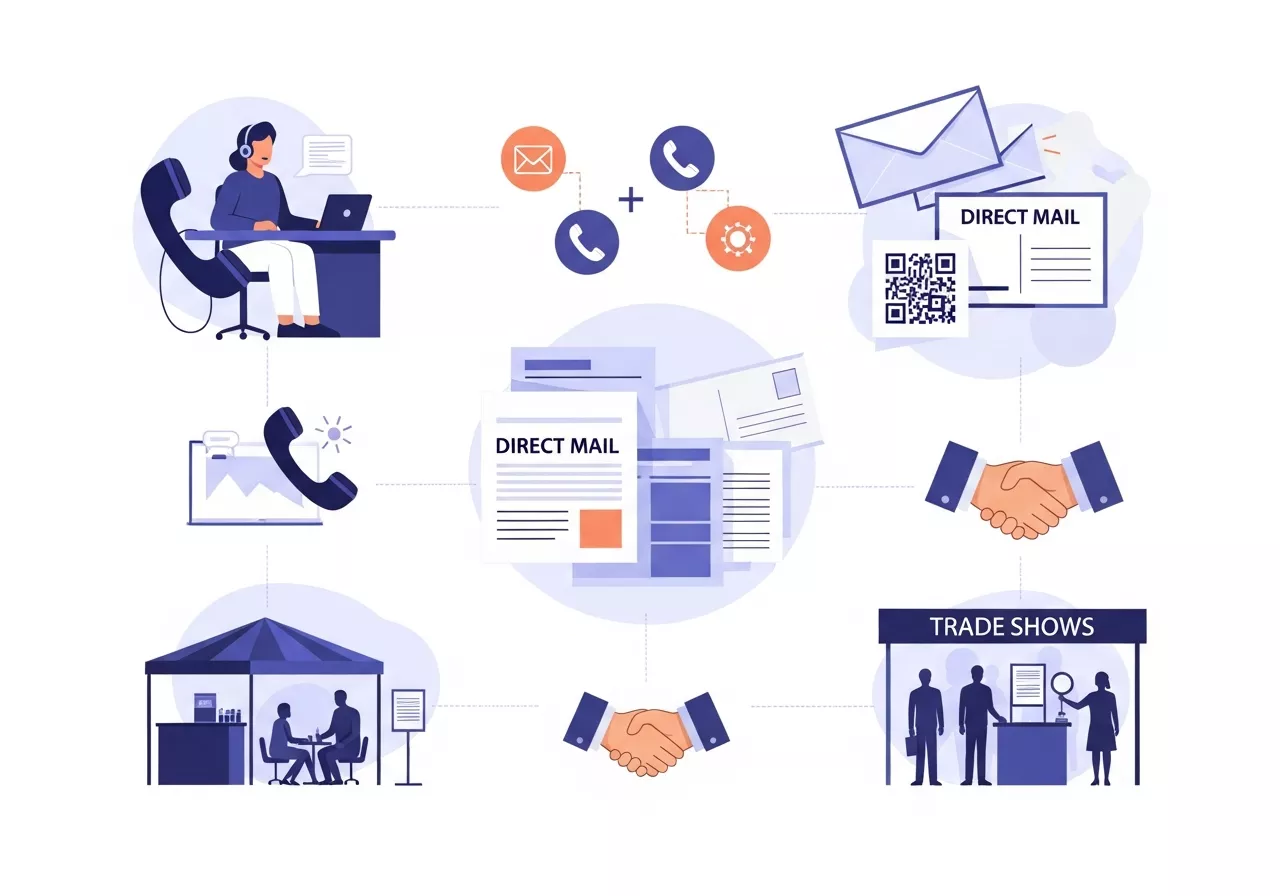
Cold Calling
Cold calling remains one of the most direct ways to connect with potential customers. Despite claims about its demise, research shows that phone conversations still convert better than most digital touchpoints for complex B2B sales.
The secret to successful cold calling lies in thorough preparation and value-focused conversations. Before dialing, research your prospects thoroughly. Understand their industry challenges, recent company news, and potential pain points your solution addresses. When you call, lead with insights or questions that demonstrate genuine interest in their business rather than launching into a sales pitch.
Modern cold calling also benefits from technology integration. CRM systems help track conversation history, while sales intelligence tools provide real-time company data and contact information. Voice analytics platforms can even help identify the most effective communication patterns and coach representatives on successful techniques.
Direct Mail Campaigns
Physical mail stands out precisely because it’s become less common. While email inboxes overflow with promotional messages, a well-designed piece of direct mail can capture attention and create memorable impressions.
Successful direct mail campaigns focus on personalization and value delivery. Use variable data printing to customize each piece with recipient names, company information, or industry-specific messaging. Include useful items like branded tools, reference guides, or exclusive offers that provide immediate value beyond the marketing message.
Timing and follow-up make direct mail campaigns more effective. Coordinate mailings with phone calls or email sequences to create multi-touch experiences. Track response rates using unique phone numbers, QR codes, or personalized landing pages to measure campaign effectiveness and optimize future efforts.
Trade Shows and Events
Trade shows offer concentrated access to qualified prospects who are actively seeking solutions in your industry. These events provide opportunities for face-to-face conversations, product demonstrations, and relationship building that digital channels struggle to replicate.
Maximize trade show ROI through strategic pre-event planning. Research attendee lists and schedule meetings with high-priority prospects before the event begins. Design booth experiences that encourage meaningful interactions rather than just collecting business cards. Train booth staff to ask qualifying questions and identify genuine opportunities.
Post-event follow-up determines ultimate success. Contact new connections within 48 hours while conversations remain fresh. Reference specific discussion points from your booth conversations and provide relevant resources based on expressed interests. Many companies see their best trade show results weeks or months after the event through consistent nurturing of relationships formed on the show floor.
Digital Outbound Marketing Strategies

Email Marketing and Cold Outreach
Email outreach enables personalized communication at scale when executed thoughtfully. The difference between effective outreach and spam lies in relevance, timing, and value proposition.
Build targeted prospect lists using specific criteria related to company size, industry, job function, or recent business developments. Craft email sequences that provide genuine insights or solutions rather than generic product pitches. Reference specific challenges facing their industry or company to demonstrate research and understanding.
Email automation platforms allow for sophisticated sequencing and personalization. Set up workflows that adjust messaging based on recipient actions like email opens, link clicks, or website visits. A/B test subject lines, send times, and message formats to identify the most effective approaches for different audience segments.
Social Media Advertising
Paid social media advertising offers precise targeting capabilities that can reach ideal prospects based on demographics, interests, job titles, and behaviors. Platforms like LinkedIn, Facebook, and Twitter provide sophisticated tools for reaching specific audience segments with tailored messaging.
LinkedIn advertising excels for B2B outbound marketing through its professional targeting options. Create sponsored content that appears in prospects’ feeds alongside organic posts from their networks. Use LinkedIn’s matched audiences feature to upload prospect lists and create lookalike audiences based on existing customer characteristics.
Video advertising on social platforms can showcase product demonstrations, customer testimonials, or thought leadership content that builds trust and credibility. Short-form videos often generate higher engagement rates and can introduce your brand to prospects who haven’t encountered your company through other channels.
Search Engine Marketing (SEM)
Pay-per-click advertising puts your message in front of prospects actively searching for solutions like yours. Unlike organic search results that take months to develop, paid search ads can generate immediate visibility and traffic.
Successful SEM campaigns balance keyword targeting, ad copy, and landing page optimization. Research high-intent keywords that indicate purchase readiness rather than just general interest. Create ad copy that directly addresses search queries and highlights unique value propositions that differentiate your offering from competitors.
Landing page optimization significantly impacts campaign performance. Ensure landing pages align with ad messaging and provide clear paths toward conversion goals. Test different headlines, value propositions, and call-to-action buttons to improve conversion rates and reduce cost per acquisition.
Display Advertising and Retargeting
Display advertising builds brand awareness and keeps your company visible as prospects research solutions. Retargeting campaigns specifically target people who have visited your website but haven’t converted, keeping your brand top-of-mind during their decision-making process.
Retargeting works because it reaches prospects who have already shown interest in your category. Create different ad messages based on which pages visitors viewed or how much time they spent on your site. Someone who visited pricing pages might respond to different messaging than someone who only viewed blog content.
Frequency capping prevents ad fatigue by limiting how often the same person sees your ads. Too many impressions can create negative brand associations, while too few may not provide sufficient reinforcement. Monitor campaign metrics to find the optimal balance for your audience and industry.
Emerging Outbound Marketing Channels
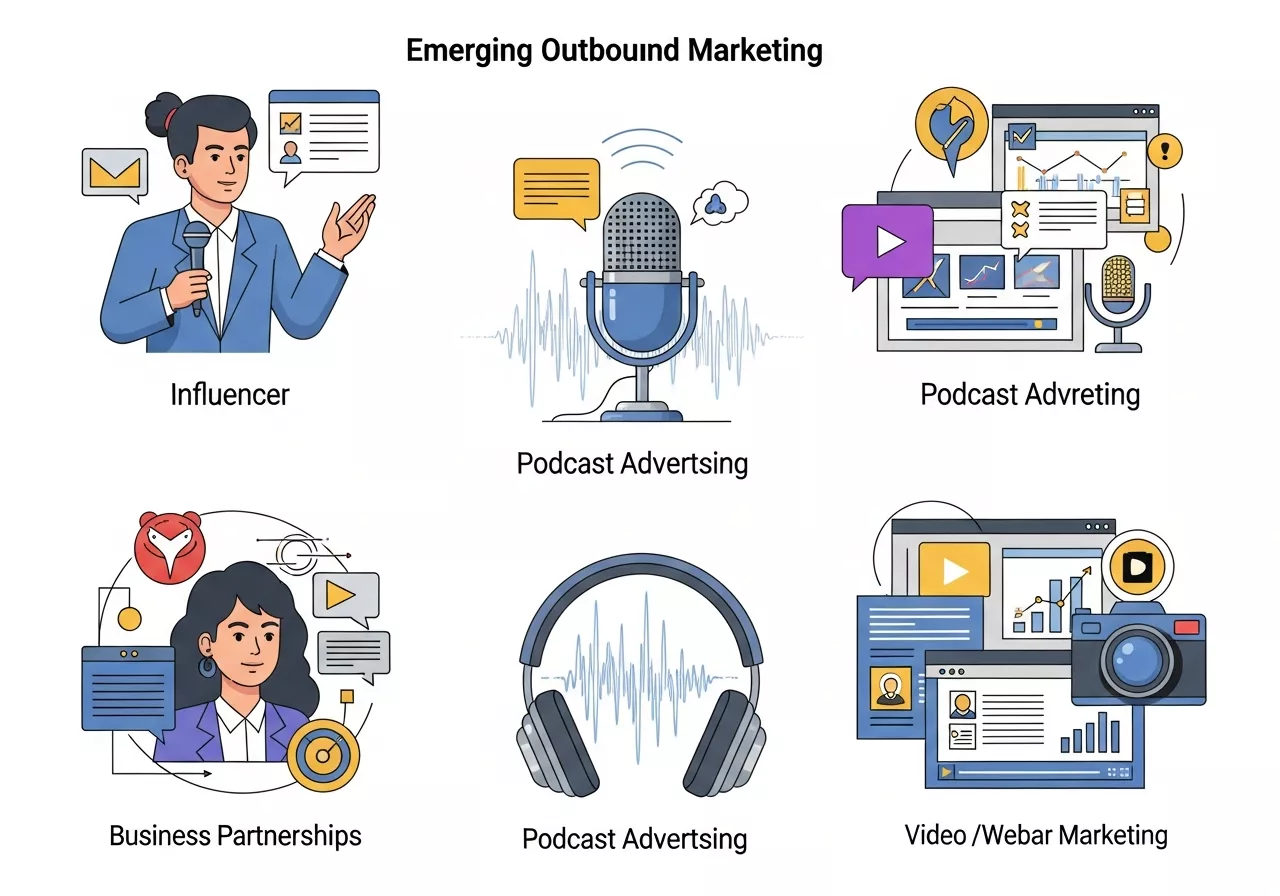
Influencer Partnerships
Influencer marketing extends beyond consumer brands into B2B markets through partnerships with industry thought leaders, analysts, and experts who command respect within specific professional communities.
Identify influencers whose audiences align with your target market and whose expertise complements your solution. Look for professionals who regularly create content about industry trends, challenges, or best practices. Micro-influencers with smaller but highly engaged audiences often deliver better results than celebrities with massive but less targeted followings.
Successful influencer partnerships focus on authentic content creation rather than obvious promotional messages. Provide influencers with access to your product, customer success stories, or unique industry insights they can share with their audiences. Long-term relationships often prove more valuable than one-off sponsored posts.
Podcast Advertising and Sponsorships
Podcast advertising reaches engaged audiences during intimate listening experiences when they’re most receptive to messages. Host-read advertisements often perform better than pre-recorded spots because they leverage the trust and rapport hosts have built with their audiences.
Research podcasts whose demographics and interests align with your ideal customer profile. Many business podcasts publish detailed listener demographics and download statistics that help evaluate potential reach and relevance. Consider both industry-specific podcasts and general business shows that attract your target audience.
Podcast sponsorships can include various formats from brief mentions to dedicated segments discussing your solution. Some podcasts offer interview opportunities where company executives can share expertise while subtly introducing their business. Track unique promo codes or landing pages to measure campaign effectiveness and calculate return on investment.
Video Marketing and Webinars
Video content humanizes your brand and can explain complex concepts more effectively than text-based materials. Webinars provide opportunities to demonstrate expertise while generating qualified leads through registration requirements.
Create video content that addresses common customer questions, showcases product features, or shares industry insights. Short explainer videos can be used across multiple channels, from social media to email campaigns. Customer testimonial videos build credibility and provide social proof that influences purchasing decisions.
Webinar marketing combines education with lead generation. Promote webinars through multiple outbound channels to maximize registration. Follow up with attendees using personalized messages that reference specific webinar content and provide additional resources. Many companies find webinar attendees convert at higher rates than other lead sources.
Integrating Outbound Marketing Methods
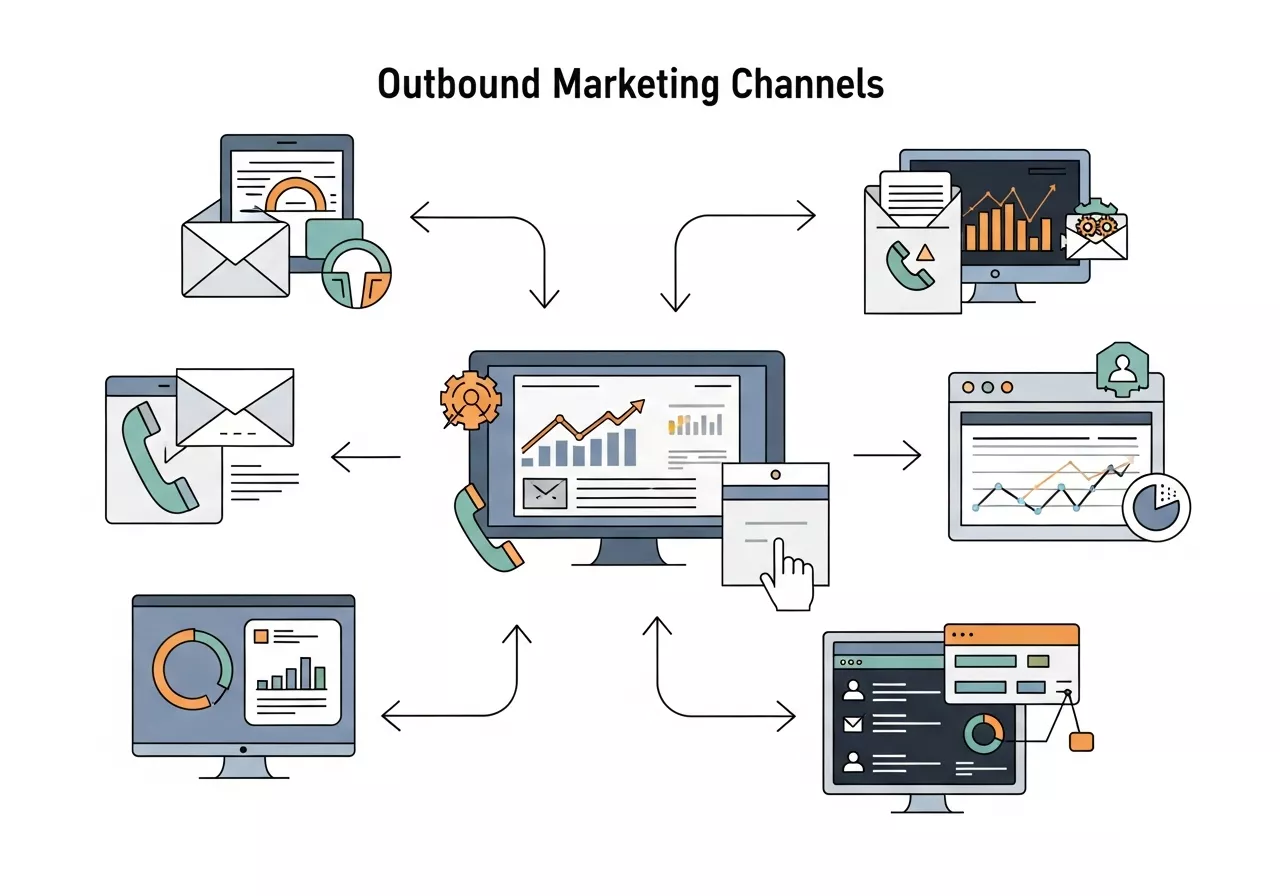
Creating Multi-Channel Campaigns
The most effective outbound marketing strategies combine multiple channels to create consistent touchpoints throughout the prospect journey. Integration ensures prospects encounter reinforcing messages across different platforms and communication methods.
Develop campaign themes that work across various channels while adapting messaging for each platform’s unique characteristics. A product launch campaign might include email announcements, social media advertising, direct mail pieces, and follow-up phone calls, each building on the others to create comprehensive coverage.
Timing coordination amplifies campaign impact. Synchronize outreach efforts so prospects might receive direct mail, see social media ads, and get phone calls within the same timeframe. This concentrated approach increases message frequency without appearing repetitive since each touchpoint uses different communication methods.
Measuring and Optimizing Performance
Effective measurement requires tracking metrics across all campaign elements to understand which channels and messages generate the best results. Establish baseline metrics before launching campaigns and monitor performance indicators throughout execution.
Attribution modeling helps identify which touchpoints contribute most to conversion goals. Many prospects interact with multiple campaign elements before converting, making it important to understand the complete customer journey rather than crediting only the final touchpoint.
Regular optimization based on performance data improves campaign effectiveness over time. Test different messaging approaches, adjust targeting parameters, and reallocate budget toward the highest-performing channels. Document successful strategies for future campaigns while discontinuing approaches that consistently underperform.
Maximizing Your Outbound Marketing Success
Outbound marketing success depends on strategic planning, consistent execution, and continuous optimization based on real performance data. The most effective approaches combine traditional methods with digital innovations to create comprehensive campaigns that reach prospects through multiple touchpoints.
Start by identifying which methods align best with your target audience preferences and business objectives. Test different approaches on a small scale before committing significant resources, and always prioritize providing value to prospects rather than just promoting your products.
Remember that outbound marketing works best as part of a complete marketing strategy that includes inbound elements. Use outbound methods to accelerate awareness and lead generation while supporting these efforts with valuable content and exceptional customer experiences that turn prospects into loyal customers.
FAQ: Outbound Marketing Methods
1. What is outbound marketing?
Outbound marketing is a proactive approach where businesses reach out to potential customers directly through channels such as cold calls, email outreach, direct mail, social media ads, and events, rather than waiting for customers to find them.
2. How is outbound marketing different from inbound marketing?
Inbound marketing attracts customers organically through content, SEO, and social media engagement. Outbound marketing actively reaches out to prospects, targeting them with direct communication and campaigns to generate leads more quickly.
3. Which outbound marketing methods are still effective today?
Traditional methods like cold calling, direct mail, and trade shows remain effective, especially when combined with modern digital strategies like email outreach, social media ads, SEM, and webinars. Multi-channel campaigns yield the best results.
4. Can small businesses benefit from outbound marketing?
Yes. Small businesses can use targeted email campaigns, local events, social media ads, and influencer partnerships to reach a specific audience without needing a massive marketing budget.
5. How do I measure the success of my outbound marketing campaigns?
Track key metrics such as conversion rates, lead quality, ROI, engagement rates, and campaign attribution across all channels. Using analytics dashboards and CRM systems helps optimize performance and refine strategies.
6. How do I combine outbound marketing with inbound strategies?
Use outbound methods to generate awareness and leads, then nurture prospects with inbound tactics such as content marketing, email newsletters, and social proof to convert them into loyal customers.
7. Are influencer marketing and podcasts considered outbound methods?
Yes. While often seen as digital or content-based, influencer partnerships and podcast sponsorships actively place your brand in front of targeted audiences, making them effective outbound channels.
8. How often should I optimize my outbound marketing campaigns?
Regularly. Monitor performance data weekly or monthly, test new approaches, adjust targeting, and reallocate budgets toward the best-performing channels for continuous improvement.
Learn more about: Generative AI in Outbound Marketing: How to Craft Personalized Campaigns at Scale

